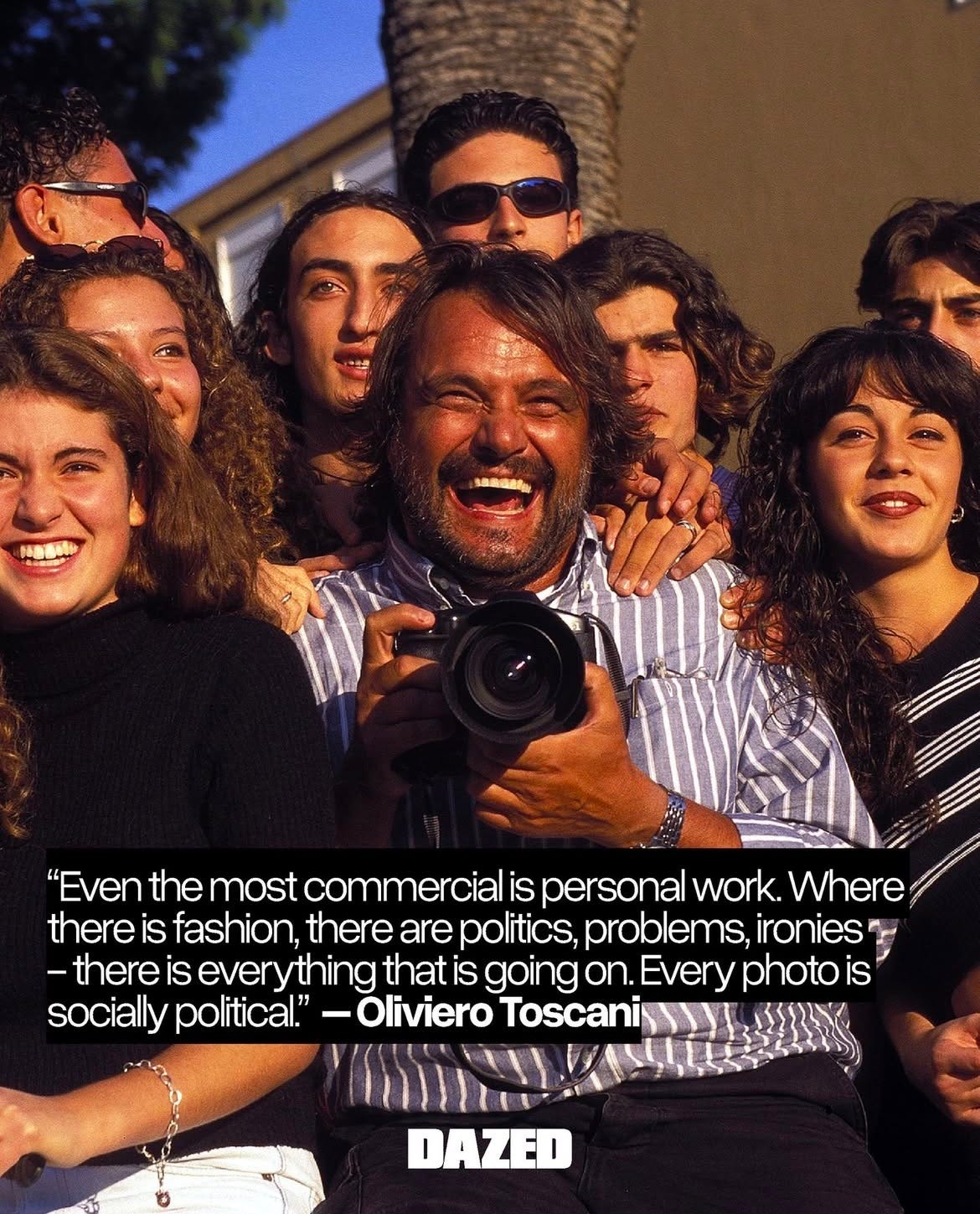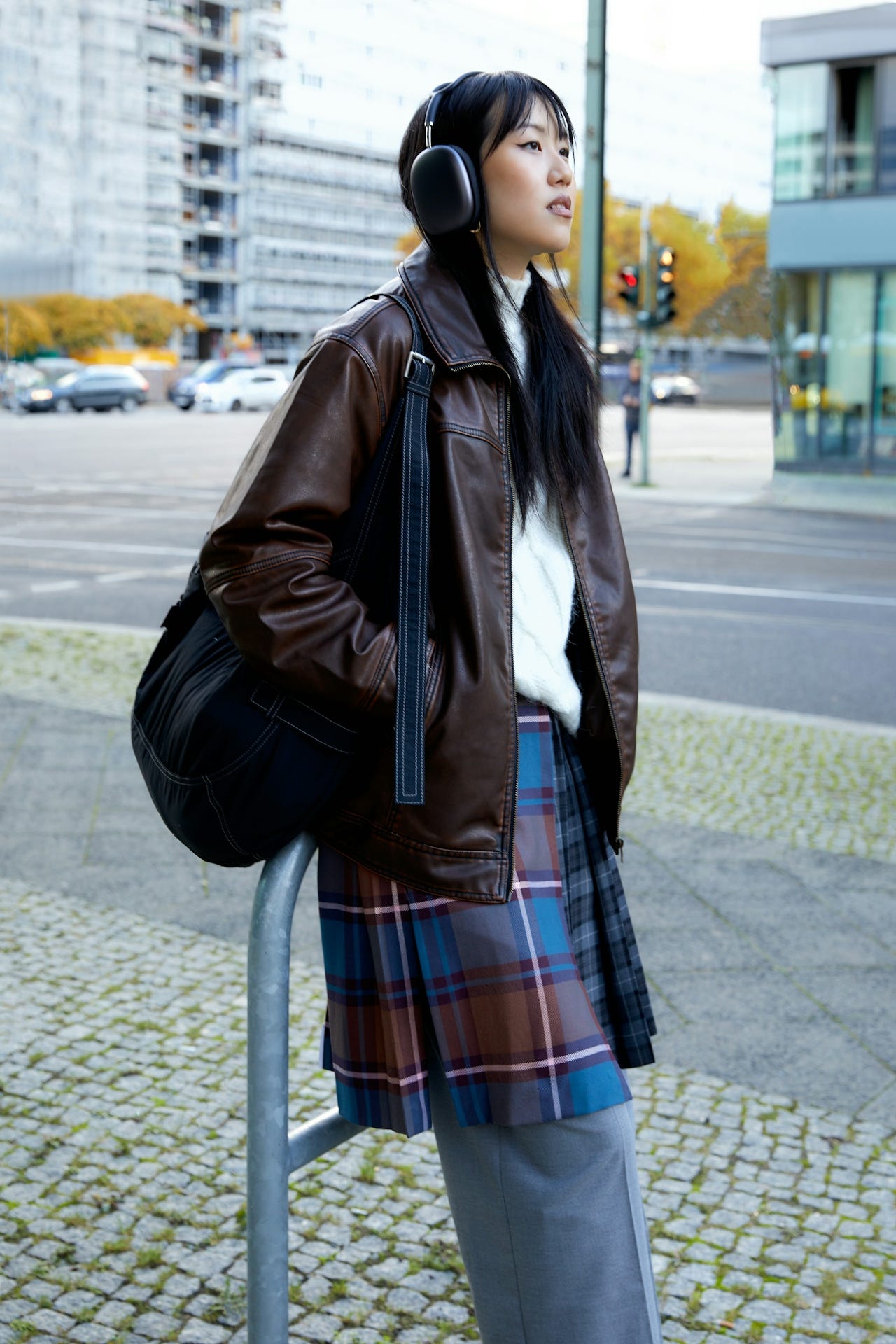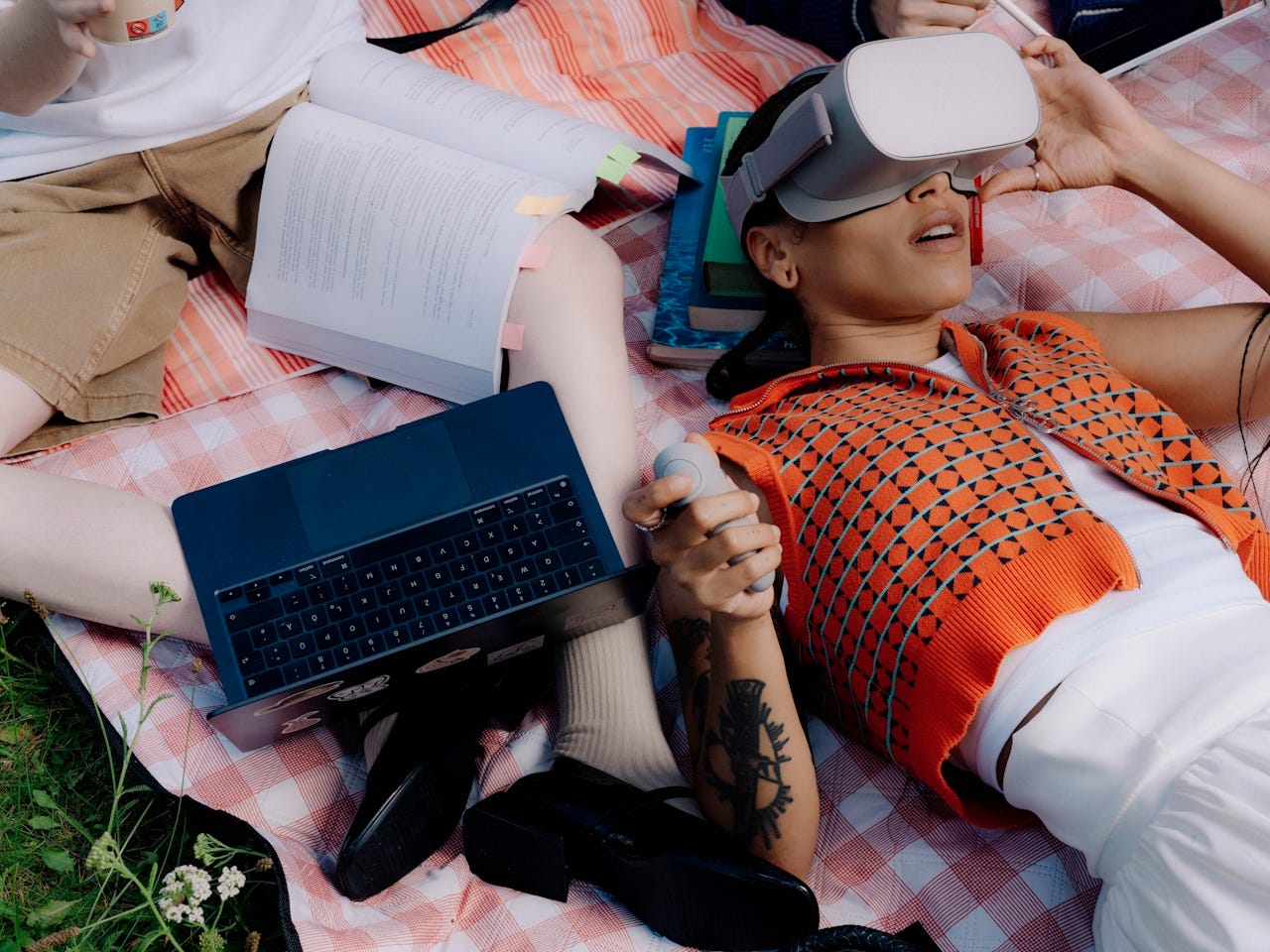The STEM-ification of Fashion
The rise of fashion tech, anti-intellectualism and its impact on circularity and personal style
The internal tug-of-war between my ‘left’ and ‘right’ brain has remained a recurring theme for much of my life. While I’ve always revelled in the certainty of a ‘correct answer’ in Maths or savoured the satisfaction of flawlessly debugging a Python script, I’ve just as easily found myself immersed for hours filling blank pages with avant-garde fashion designs, crafting mystery plots or pondering over think pieces on popular culture. Although the concept of ‘left-brained’ or ‘right-brained’ dominance has long been debunked, the war between STEM and the arts remains deeply entrenched in modern society.
The litany of cavils that resulted from my choice to pursue an undergraduate degree in Fashion Marketing reflects much of today’s undervaluation of creative pursuits. My IB Economics teacher, a fellow woman of colour in STEM, expressed her dismay, deeming my choice, a “waste of potential”—a sentiment that would echo throughout Freshers’ Week. The same imperious Economics students who had been my academic equals just months before, were swift to dismiss my course as a “waste of £27K” while my friends in Biomedicine struggled to hide their unbridled mortification at learning that a fashion student (derogatory) had exceeded their entry requirement grades, despite my ‘lightweight’ degree choice. The question etched in their frustrated perplexity was clear: if you were “smart enough” to be in STEM, why would you choose to be a “creative”?
These experiences, as I later discovered from fellow and former fashion students, were not isolated, but instead symbolised a broader societal ignorance that dismisses the intellectual demand, rigour and multidisciplinary skillset required to pursue creative fields.
But while the fashion industry has historically depended on creative direction and experimental ideas to drive innovation and commercial success; it is now one of many industries receiving the STEM treatment. Platforms such as Data But Make It Fashion, with a 425K-strong Instagram following, the popularity of Pinterest Predicts— Pinterest’s annual trend prediction report— as well as TikTok’s burgeoning ‘trend forecaster’ community are all testament to the shifting influence of data in shaping the modern fashion landscape.
It goes beyond social media. Data-driven innovation is expected to solve a wide range of the fashion industry’s issues including stock management, AI-assisted product discovery and more. Among such concerns, sustainability and socio-environmental impact remain most notable, even as they fall down the priority list for fashion executives, with solutions that range from reducing sampling waste with 3D CAD rendering to environmental impact tracking tools which promise automated lifecycle assessments, smart circular design recommendations and more. As new fashion tech companies continue to spring up, roles requiring domain experts with both creative competency and data literacy are increasing in demand. However, as we embrace 2025 as the ‘Year of Fashion Tech’ and the opportunities provided by STEM-powered innovation, wider conversations continue to raise concerns around how such shifts stand to impact creativity, collaboration and more.
fashion intellectualism
This thought process first crystallised after a video I came across on TikTok by Alyssa Bigbee, in which she calls attention to how the pedestalization of STEM subjects and relegation of humanities and the arts, correlates with a broader trend towards anti-intellectualism.
 Tiktok failed to load.
Tiktok failed to load.Enable 3rd party cookies or use another browser
This is hardly a new idea; Dr Loretta Jackson-Hayes’ highlights in a 2015 Washington Post article: “our culture has drawn an artificial line between art and science that did not exist for innovators like Leonardo Da Vinci and Steve Jobs.” She advocated for engagement with the arts to enhance approaches to STEM innovation.
What struck me most in Alyssa’s video was her argument that delineates how a lack of engagement with humanities and the arts not only devalues them but in fact also hinders STEM practitioners within their own fields. Without the humanities, a person may be able to read data but could struggle to apply it without willingness to consider the importance of historical and societal context. A lack of interaction with or creation of art or design in any form may limit one’s ability to interpret, visualise and communicate complex information in a compelling and universally understood way. By dismissing the necessity of engaging with language and literature through reading, the comprehension skills typically obtained from such study are likely to be missing, inhibiting one’s ability to derive deeper meaning from what they see on the surface.
So how does this apply to fashion, an avenue that has historically found itself at the centre of debate regarding its intellectual status and position within high or low culture? Considering fashion as market, the ‘business of fashion’—concerned with a capitalistic need for growth and optimisation— lends itself towards an understanding of why the prioritisation of STEM as a competitive tool is justified and necessary. The advancements enabled by STEM-driven innovation have undeniably revolutionised fashion’s production processes; supporting unprecedented scalability and forging the linear take-make-waste value chain model that characterises the industry today. If the colossal growth of brands like SHEIN is any indication of the success and effectiveness of this model, one could be inclined to say the system isn’t broken at all but rather is optimised to work exactly as intended—to promote continuous expansion. In such cases, anti-intellectualisation in fashion manifests from an over-prioritisation of efficiency and data, neglecting deeper meaning and reducing it to a state of mere commodity, stripped of cultural, artistic or philosophical context.
However, for those with an appreciation for fashion as language, it is clear that fashion is and always has been intellectual; a medium for the transmission and embodiment of cultural, societal and political discussion (Ando and Campagna, 2022). From the provocative works of the late Oliviero Toscani to the dissident, visionary and conceptual collections of Alessandro Michele during his time at Gucci; creative minds across the industry have demonstrated fashion’s ability to invoke discourse about the self and the wider world beyond its connection to commerce.
It is this dual nature of fashion that enables us to understand the nuances of why fashion’s linear model works so “well”. Yes, it is a system optimised for growth; however it is the use of fashion as a tool to communicate ones personal identity, beliefs, political associations and subcultures that provides the basis for understanding why many fashion consumers find it difficult to simply ‘buy less clothes’. Technological advancements, fine-tuned to increase sales and therefore reinforce unsustainable consumption patterns, only exacerbate this further.
While these innovations could and indeed should be applied to optimising circular supply chains and mindful consumption, such consumer adoption undoubtedly hinges on understanding the philosophies and theories that shape how we interact with fashion.
“There is an opportunity to repurpose these technologies to serve consumers by providing advice that does not solely result in driving new purchases. From offering styling tips to other use-oriented solutions (Armstrong et al., 2016), such applications could empower consumers to make more mindful fashion choices.” —Lydia Oyeniran (Mindful Style Consumption Recommender System, Master’s Thesis, 2024)
The emotional, cultural, artistic and societal aspects of fashion should be central to any dialogue concerning creating a more circular, sustainable fashion world however they are often considered secondary to sharing statistics about climate change which, while invoking temporary shock, do very little to quell the desire for self-expression, connection and belonging that fuels fashion consumption.
Kate Fletcher’s Craft of Use (2016), illuminates how consumerism’s impact on fashion has fostered a culture that no longer necessitates that clothing be used and lived in but simply bought. Encouraging a more intellectually engaged approach to fashion that prioritises storytelling, reconnecting consumers with the heritage, craftsmanship and meaning behind our clothes has a far greater likelihood of fostering emotional investment and increasing the longevity of our wardrobes than mere statistics or optimised systems. Creating a truly sustainable fashion industry, requires resisting anti-intellectualism and embracing a holistic approach that values both technological innovation alongside cultural, artistic and theoretical underpinnings of style.
the personal style algorithm
The so-called death of personal style has been a topic of ongoing dialogue over the past year, with countless takes on why many of us struggle to translate style inspiration into something truly “authentic”. We see an influencer’s outfit and recognise that we like their style, but instead of questioning why— considering how much of the outfit’s appeal belongs to the wearer versus the clothes themselves, or how social conditioning may have shaped our preference—we simply break the outfit down into its features (dress/trousers + Tabi boots = personal style), click ‘buy now’ and subsequently find ourselves resembling the ‘microtrend final boss’.
Trend adoption is of course nothing new. However the influence of social media algorithms has made the dissemination and discovery of trends far easier; accelerating the trend cycle by as much as 50% in recent years (WGSN, 2023) while limiting our ability to engage more deeply with our style influences. Our compulsion to coin every look into a ‘core’ or ‘aesthetic’ is a symptom of a broader cultural shift driven by digital capitalism; shaping our thinking towards an approach that often mirrors the logic of training an unsupervised machine learning model. We reduce the dimensionality of someone’s unique style into its most recognisable components, group similar looks into clusters, and ultimately classify them under a homogenised label that’s easily identifiable to others. While such simplification is essential for training an algorithm, particularly those adopted by online retailers to recommend the latest trends and products, when applied to the realm of personal style, this logic falters.
Personal style is more than a formula; it’s a practice that evolves as a by-product of lived experiences and self-awareness of the threads that have remained consistent throughout your life. This is perhaps why recreating our favourite fashion looks to precision often feels like being in costume. Context, complexity and self-comprehension are the point. STEM-influenced thinking, while valuable in solving many complex problems by prioritising fast and efficient outcomes, can often lead to an oversimplification that reduces the style self-discovery process to a mere equation: ‘I want to dress more like y, therefore I must extract their key outfit features (x)’.
While such formulas can be a helpful starting point for understanding our own preferences; stopping there often results in cheap duplication rather than something genuinely unique. A conscious effort is needed to ensure such thinking doesn’t replace deeper, more reflective engagement with personal style; shifting away from consumerism and adopting an attitude of mindful connection to the why behind our clothing choices.
the tech-to-talk ratio
Working at a circular fashion tech start-up, my colleagues and I often joke about how sustainable fashion suffers from a ‘yapping’ problem: characterised by continuous re-iteration of fashion’s problems but with little decisive action. Far from being the most contentious observation, it merely highlights a persistent apprehension around taking the bold strides necessary to address the issues being discussed. It’s an argument that, in fact, rightly justifies the growing presence of fashion tech companies taking up the mantle to try and provide a tangible solution. However it wasn’t until reading Sustainable Fashion Forum’s 2024 in Review: Why Sustainable Fashion Feels Stuck- And What To Do About It, that I considered the concept of the toolbox paradox/fallacy, which offers a compelling potential reason for why progress remains so incremental, despite all these available solutions.
The toolbox paradox is generally understood as a mindset where one believes they cannot start until they have the “right tools”. In the case of creating a circular fashion economy (as SFF points out), there are a multitude of tools out there already. However, no STEM solution alone can solve the bottlenecks contributing to fashion’s painfully slow transition; a sentiment reiterated by countless sustainable fashion academics and stakeholders I’ve encountered while studying and working in industry. Textiles innovators can make all the regenerative new materials in the world but will collapse without buy-in from brands (as seen with Renewcell). Similarly, tech start-ups attempting to solve circularity will struggle to convince brands to part ways with their traditional systems without the added incentive from the government in the form of funding or legislation. A key challenge in STEM-prioritised thinking is in the belief that tech, science and data alone can hold more value than the people who utilise them. We’ve all bared witness to what happens when we rely too heavily on AI to think creatively and the uncanny slop that ensues.
It takes a collaborative effort for fashion brands, governments, suppliers AND tech start-ups to come up with truly creative solutions to fashion’s problems. Such creative collaboration requires a level of humanity that simply can’t be captured through STEM alone.
‘Yapping’ itself is not the issue but rather the fact that a lot of this talk amalgamates in roundtables and forums, resulting in reports and whitepapers rather than tangible progress. While research is undeniably necessary and cannot be rushed, this often frustratingly seems to occur while we wait for a silver bullet to “make fashion circular”. Meanwhile independent companies all too eagerly clamour to be fashion’s saviour, falling short upon the same realisation that it’s not a lack of tech but rather a lack of collaboration that is stalling progress.
It isn’t even just humans that need to collaborate. A core tenet for fashion’s vision of Industry 4.0 is interoperability - the tech itself needs to talk. It could be argued that the reason it currently doesn’t is because the people who are making the tech, aren’t working together, instead adopting the very same blinkered, competitive, race-to-profit mentality that created much of the fashion industry’s issues in the first place.
“What becomes evident is that this is not just about individual solutions or technologies. It is about the interaction between systems…” —Shivam Gusain, Innovation Analyst, Fashion for Good (via LinkedIn)
A 2023 report by LinkedIn demonstrates that 92% of executives believe that in this age of AI, ‘people skills’ are more important than ever. With this idea in mind it becomes essential to consider the importance of not relying purely on tech, but ensuring that ‘people-to-people-to-tech’ collaboration is at the forefront of future strategies.
So what?
From bio-fabrication innovations and AI-powered circular design to Piet Mondrian-inspired YSL cocktail dresses and the style symbols of the punk movement, fashion is perhaps one of very few (if any) industries uniquely placed right at the intersection of science, art, culture and technology. But like most things, the STEM-ification of fashion requires balance. Maintaining the intellectual, personal and humanistic qualities of fashion—in a society preoccupied with efficiency, optimisation and unchecked expansion—are integral to creating an industry where clothing is more than commodity, growth is decoupled from overproduction and tech is used as a tool rather than a replacement for meaningful collaboration.
References + Extra Reading:
Craft of Use: Post-Growth Fashion (Fletcher, 2016)
The AI-Fuelled Future of Work Needs Humans More Than Ever (Wired, 2024)
Fashion’s Sustainability Pullback (Business of Fashion, 2024)









Really enjoyed this interdisciplinary analysis, Lydia! Finally got round to reading this. Did not disappoint. I like how you touched on the underestimation of fashion in the context of wider societal progress. You might enjoy this lil dispatch on that very subject by Beth Bentley, if you haven't already: https://patternrecognitionbytomorrowism.substack.com/p/trivial-pursuits. As someone whose engagement with fashion is very much peripheral, I'm just starting to wake up to its interdisciplinary potential.
Love this!! Like the Aritzia campaign with Nara Smith